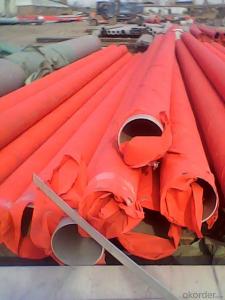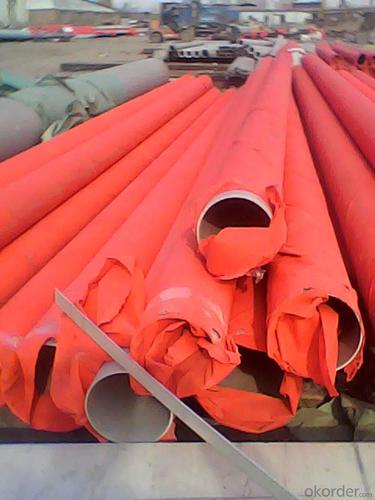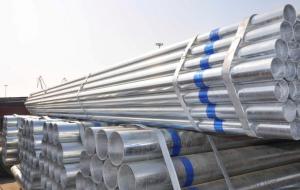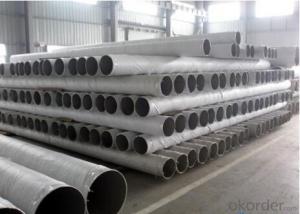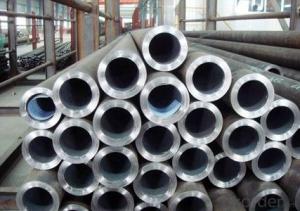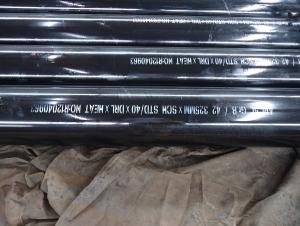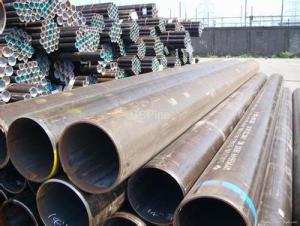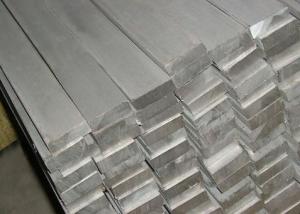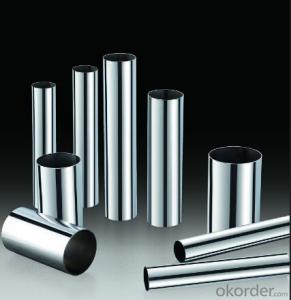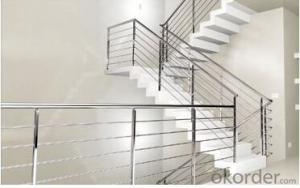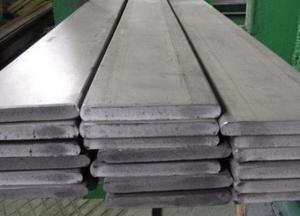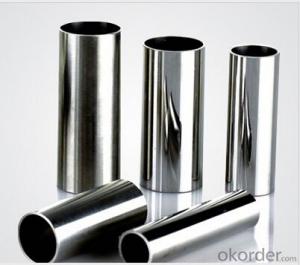PVC Coated Stainless Seamless Steel Tube
- Loading Port:
- Tianjin
- Payment Terms:
- TT or LC
- Min Order Qty:
- 25 m.t.
- Supply Capability:
- 10000 m.t./month
OKorder Service Pledge
OKorder Financial Service
You Might Also Like
We are company that have many years experience and professional manager team and engineer team and sales team, sure we will provide you high quality of pipe and professioanl service.
Seamless pipe possesses a hollow section and without seam around the strip steel. It is made with solid bar or steel ingot by perforating machine. As the facture process does not include any welding, seamless pipes are considered to be stronger and more durable. Generally speaking, seamless pipe has better pressure resistance and security than other classifications, and was usually more easily available than welded pipe.
2、Main Features of the Seamless Pipe:
• High working accuracy
• High strength
• Small inertia resistance
• Strong therming dissipine ability
• Good appearance
• Reasonble price
3、Seamless Pipe Specification:
Standard | GB, DIN, ASTM ASTM A106-2006, ASTM A53-2007 |
Grade | 10#-45#, 16Mn 10#, 20#, 45#, 16Mn |
Thickness | 8 - 33 mm |
Section Shape | Round |
Outer Diameter | 133 - 219 mm |
Place of Origin | Shandong, China (Mainland) |
Secondary Or Not | Non-secondary |
Application | Hydraulic Pipe |
Technique | Cold Drawn |
Certification | API |
Surface Treatment | factory state or painted black |
Special Pipe | API Pipe |
Alloy Or Not | Non-alloy |
Length | 5-12M |
Outer Diameter | 21.3-610mm |
Grade | 20#, 45#, Q345, API J55, API K55, API L80, API N80, API P110, A53B |
Standard | ASME, ASTM |
1) Material:20#(ASTM A 106/A53 GRB.API5LGRB,GB),45#,16Mn,10#.
2) Specification range: OD: 21.3-610mm, WT:6-70mm, length:6-12m or according to the requirement of clients.
3) Executive standards: GB, ASME API5L.ASTM A 106/A53,Despite of the above standards, we can also supply seamless steel pipe with standard of DIN, JIS, and so on, and also develop new products according to the requirements of our clients!
4) Surface: black lacquered, varnish coating or galvanized.
5) Ends: Beveled or square cut, plastic capped, painted.
6) Packing: bundles wrapped with strong steel strip, seaworthy packing.
4、Packaging & Delivery:
Packaging Details: | seaworthy package, bundles wrapped with strong steel strip |
Delivery Detail: | 15-30days after received 30%TT |
5、FAQ of Seamless Pipe:
①How is the quality of your products?
We have many years business experience in this area, and we have professional engineer and manager team and sure we can provide you high quality production and professional service.
②How about price?
Yes, we are factory and be able to give you lowest price below market one, and we have a policy that “ for saving time and absolutely honest business attitude, we quote as lowest as possible for any customer, and discount can be given according to quantity”,if you like bargain and factory price is not low enough as you think, just don’t waste your time.Please trust the quotation we would give you, it is professional one.
③Why should you chose us?
We can give you both.Additionally, we can also offer professional products inquiry, products knowledge train(for agents), smooth goods delivery, exellent customer solution proposals.Our service formula: good quality+good price+good service=customer’s trust
SGS test is available, customer inspection before shipping is welcome, third party inspection is no problem.
6、Seamless Pipe Images:
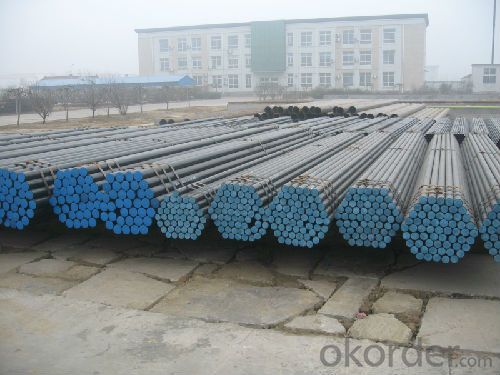
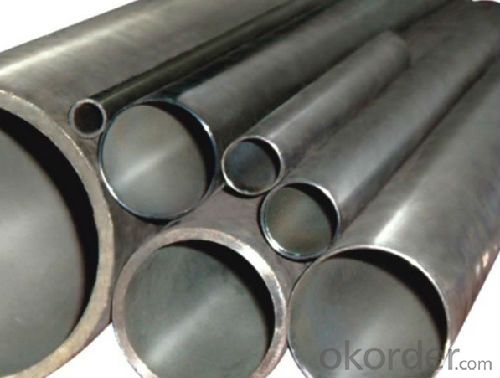
- Q: How do you prevent erosion in stainless steel pipes?
- To prevent erosion in stainless steel pipes, several measures can be taken. 1. Proper material selection: Choosing a high-quality grade of stainless steel with good resistance to erosion, such as 316 or duplex stainless steel, can significantly reduce the risk of erosion. 2. Corrosion-resistant coatings: Coating the internal surface of the stainless steel pipes with a corrosion-resistant material can provide an extra layer of protection against erosion. Epoxy coatings, for example, are commonly used to protect against erosion in pipes. 3. Flow control: Managing the flow rate and velocity of the fluid passing through the pipes is crucial in preventing erosion. High flow rates and excessive turbulence can accelerate the erosion process. Implementing flow control devices like flow restrictors or flow baffles can help regulate the fluid velocity, minimizing erosion. 4. Regular maintenance and inspection: Conducting routine inspections to identify any signs of erosion or corrosion is essential. This allows for timely repairs or replacements of affected sections before erosion becomes severe. Additionally, regular cleaning and flushing of the pipes can help remove any sediment or debris that may contribute to erosion. 5. Proper pipe installation: Ensuring that the pipes are properly installed and supported can help prevent damage caused by vibrations or excessive movement. Proper alignment and support can reduce stress on the pipes, minimizing the risk of erosion. 6. Fluid properties: Understanding the properties of the fluid being transported through the stainless steel pipes is important in preventing erosion. For instance, if the fluid contains abrasive particles, implementing filtration systems or using strainers can help remove these particles before they reach the pipes, reducing erosion. 7. Education and training: Providing education and training to personnel involved in the operation and maintenance of the pipes is crucial. This includes training on proper handling, maintenance, and troubleshooting techniques to identify and address erosion-related issues promptly. By implementing these preventive measures, erosion in stainless steel pipes can be effectively minimized, ensuring their longevity and optimal performance.
- Q: What is the difference between seamless and LSAW stainless steel pipes?
- The main difference between seamless and LSAW (Longitudinal Submerged Arc Welded) stainless steel pipes lies in their manufacturing process. Seamless stainless steel pipes are made by piercing a solid cylindrical billet and then rolling it into a pipe shape without any welding involved. On the other hand, LSAW stainless steel pipes are created by using a submerged arc welding process along the longitudinal seam of a steel plate. This welding process provides added strength and durability to the pipe. Both types of pipes have their own advantages and are used in different applications based on their specific characteristics.
- Q: How thick is the 3 stainless steel tube?
- All units of steel default are mm mm. stainless steel 3 thick meaning, that is, the thickness of 3 mm mean
- Q: What are the factors to consider when selecting stainless steel pipes?
- When selecting stainless steel pipes, it is important to consider factors such as the grade of stainless steel, corrosion resistance, temperature and pressure requirements, size and dimension of the pipes, and their intended application. Additionally, factors like cost, availability, and the reputation of the supplier should also be taken into account.
- Q: How do stainless steel pipes compare to cast iron pipes?
- Stainless steel pipes are generally considered to be superior to cast iron pipes. Stainless steel pipes are highly resistant to corrosion, rust, and chemical reactions, making them more durable and longer-lasting than cast iron pipes. Additionally, stainless steel pipes have a smoother interior surface, resulting in better flow rates and reduced risk of clogs. While cast iron pipes have their own advantages such as noise reduction and fire resistance, stainless steel pipes are more commonly used in modern plumbing systems due to their overall superior performance.
- Q: Can stainless steel pipes be used in the oil and gas industry?
- Stainless steel pipes are indeed suitable for use in the oil and gas industry. They come with several advantages that make them highly desirable for this sector. Firstly, their exceptional resistance to corrosion is of utmost importance in withstanding the harsh environments and corrosive substances found in the oil and gas industry. This corrosion resistance ultimately prevents leaks and ensures the pipes' integrity, leading to enhanced safety and reliability. Moreover, stainless steel pipes boast remarkable strength and durability, enabling them to endure the high pressures and temperatures frequently encountered in oil and gas operations. Additionally, stainless steel is non-reactive, meaning it does not contaminate the oil or gas being transported, thereby guaranteeing the purity and quality of the product. In summary, the superior properties of stainless steel render it the preferred choice for oil and gas industry applications, providing a dependable and long-lasting solution.
- Q: How much is one ton of stainless steel pipe?
- Basically, each shop is not the same, each place is not the same, you can ask more about the goods than three?
- Q: What is the difference between 304J3 and 316J3 stainless steel pipes?
- The main difference between 304J3 and 316J3 stainless steel pipes lies in their composition and corrosion resistance properties. 304J3 stainless steel is a grade of stainless steel that contains 18% chromium and 8% nickel. It is known for its excellent corrosion resistance, high strength, and good formability. This grade is commonly used in various applications, such as food processing, chemical processing, and architectural applications. On the other hand, 316J3 stainless steel is a grade that contains 16-18% chromium, 10-14% nickel, and 2-3% molybdenum. This additional molybdenum content enhances its corrosion resistance, especially against chloride environments. As a result, 316J3 stainless steel is often used in more demanding applications, such as marine environments, pharmaceutical equipment, and coastal structures. In summary, the key difference between 304J3 and 316J3 stainless steel pipes is the composition and the subsequent corrosion resistance properties. While both grades offer good corrosion resistance, 316J3 stainless steel provides superior resistance in chloride-rich environments, making it suitable for more demanding applications.
- Q: Can stainless steel pipes be used for transportation of hazardous materials?
- Indeed, hazardous materials can be transported using stainless steel pipes. The reason for this is that stainless steel is renowned for its resistance to corrosion, its strength, and its durability, all of which make it appropriate for handling various types of hazardous substances. In industries such as chemicals, petrochemicals, oil and gas, and pharmaceuticals, where the transportation of hazardous materials is a routine occurrence, stainless steel pipes are frequently employed. The corrosion resistance of stainless steel ensures that it can endure exposure to a wide range of chemicals without deteriorating. This is particularly crucial when transporting hazardous materials that have the potential to react with or corrode other materials. Moreover, stainless steel pipes possess high strength, enabling them to withstand the pressures and stresses associated with the transportation of hazardous materials. Furthermore, stainless steel pipes can maintain the integrity of the hazardous material being transported by preventing contamination from external sources. Stainless steel, being inert and having a smooth surface, is resistant to the formation of deposits that could potentially react with or contaminate the hazardous materials. However, it is worth noting that careful consideration should be given to the selection of the appropriate stainless steel grade and its compatibility with the specific hazardous material being transported. Different stainless steel alloys possess distinct characteristics, so it is crucial to choose the grade that can withstand the specific chemical properties of the hazardous material. Additionally, it is always important to adhere to regulations and standards governing the transportation of hazardous materials in order to ensure safety and compliance. These regulations may include specific requirements regarding the design, fabrication, and testing of the stainless steel pipes used for transportation. To conclude, stainless steel pipes can effectively be employed for the transportation of hazardous materials due to their corrosion resistance, strength, and durability. However, it is vital to consider the specific requirements of the hazardous material and to adhere to relevant regulations to ensure the safe and efficient transportation of such materials.
- Q: Can stainless steel pipes be used for high-temperature applications?
- Yes, stainless steel pipes can be used for high-temperature applications. Stainless steel has excellent heat resistance properties, making it suitable for conveying hot fluids or gases. It can withstand high temperatures without losing its strength and durability, making it a reliable choice for various industrial, commercial, and residential applications that involve high-temperature environments.
Send your message to us
PVC Coated Stainless Seamless Steel Tube
- Loading Port:
- Tianjin
- Payment Terms:
- TT or LC
- Min Order Qty:
- 25 m.t.
- Supply Capability:
- 10000 m.t./month
OKorder Service Pledge
OKorder Financial Service
Similar products
Hot products
Hot Searches
Related keywords
